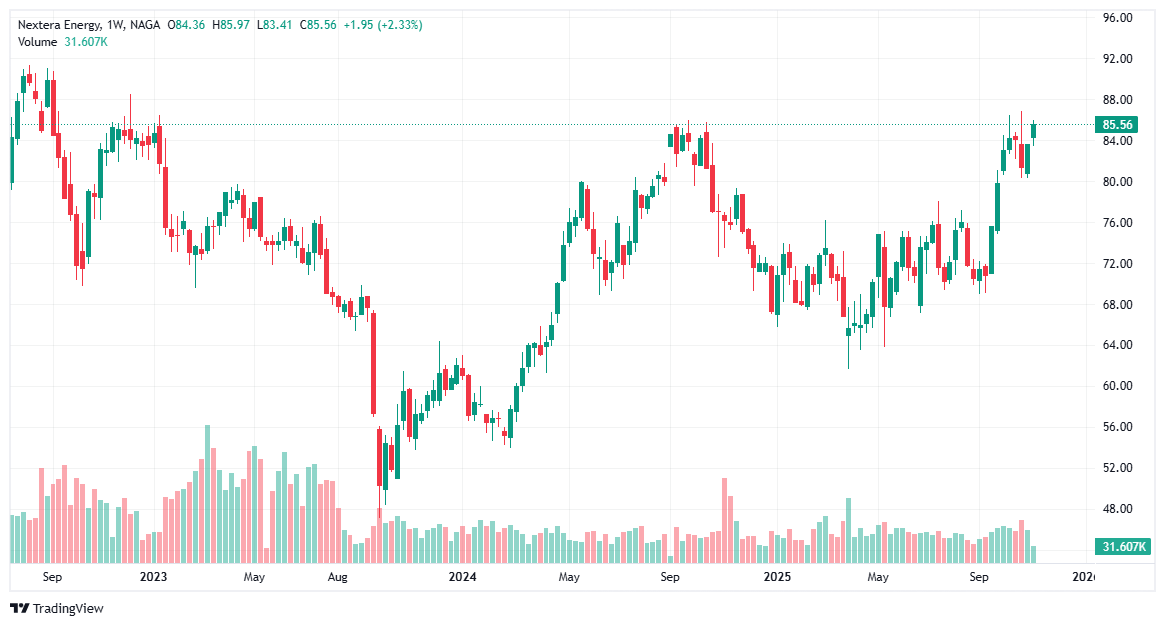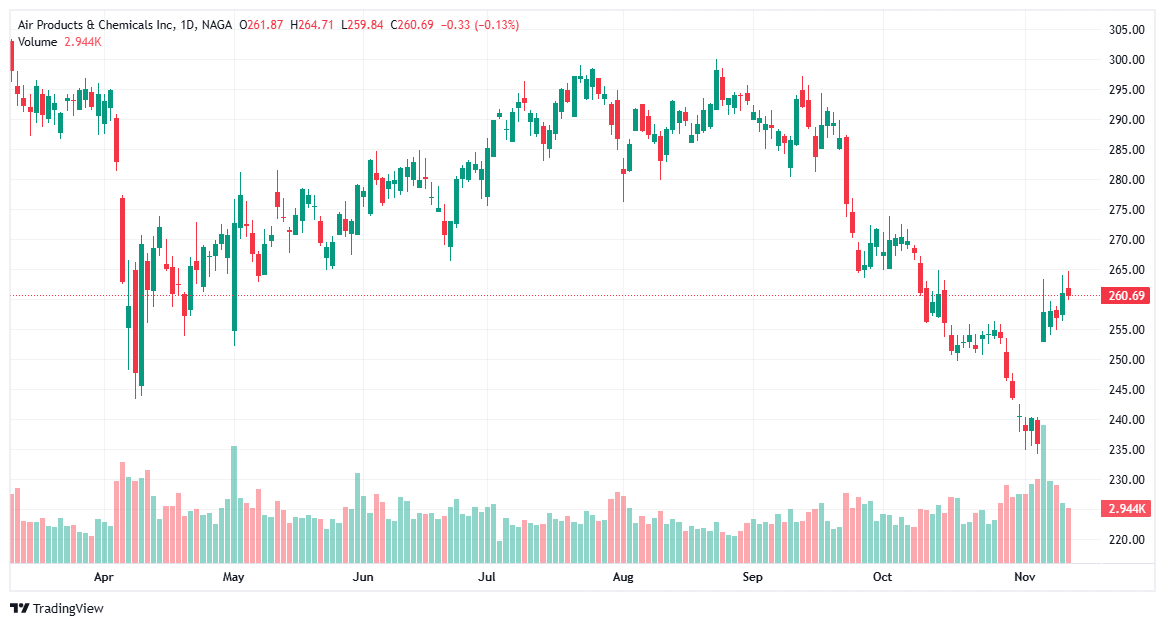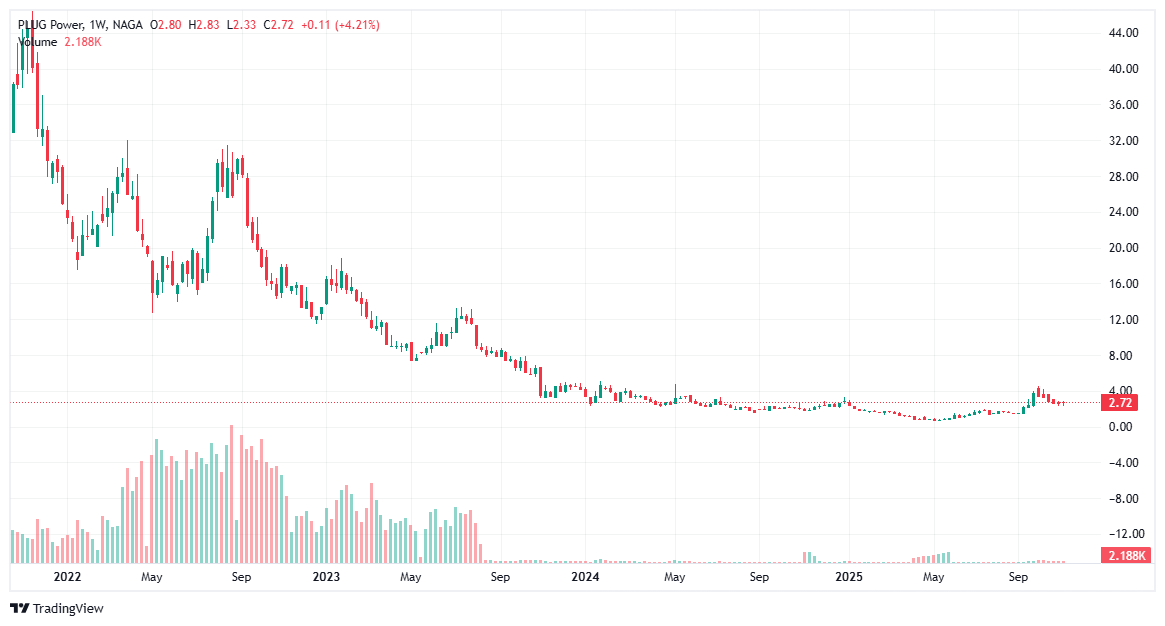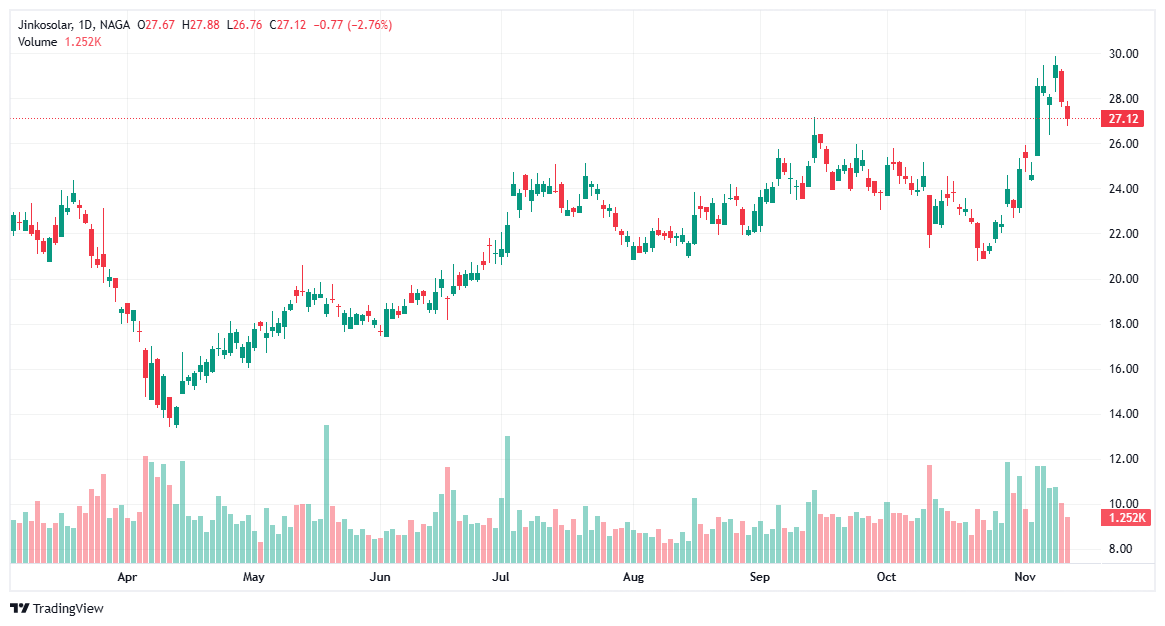The global economy is rapidly transitioning away from carbon-based fossil fuels toward cleaner alternative energy sources due to growing climate change concerns. Investments in decarbonizing the global economy are projected to exceed $100 trillion over the next three decades. In 2025, global energy investments reached a record $3.3 trillion, with over two-thirds directed toward clean energy technologies including renewables like solar and wind, nuclear power, and energy storage. China leads with roughly one-third of these investments, while solar energy alone attracted around $450 billion, reflecting rapid capacity expansion and technological advancements.
Looking ahead to 2026, the renewable energy sector is expected to maintain strong growth as solar and wind capacity additions accelerate and new storage technologies gain traction. The peak of global carbon emissions is projected around 2026 followed by a decisive downward trend, supported by electrification and growth in electric vehicle adoption. This ongoing momentum presents significant opportunities for companies with strong renewable energy and clean tech strategies, making clean and renewable energy stocks a compelling choice for investors seeking exposure to this long-term, transformative megatrend. However, a few stand out above their peers as clean & renewable energy stocks to consider.
How to Get Started with Renewable Energy Stocks — Quick Guide
- Decide how to invest — You can trade renewable energy stocks to capitalize on market movements or buy shares to become a direct owner in influential companies driving the green energy megatrend.
- Select your top stocks — Consider market leaders like NextEra Energy (NEE), Enphase Energy (ENPH), First Solar (FSLR), Plug Power (PLUG), and SunPower (SPWR) as starting points to build your portfolio. These companies are well-positioned in solar, wind, and hydrogen sectors with solid growth prospects.
- Take action — Open an account with a trusted broker such as NAGA.com to begin trading or investing in these stocks.
- Learn from others — Use social trading platforms to copy expert investors' renewable energy strategies in real time and stay updated on market shifts
Why Invest in Green Energy Stocks?
Green energy technologies continue advancing, replacing fossil fuels with renewable sources such as solar, wind, hydroelectric, and emerging solutions like battery storage and hydrogen. Investor interest has surged, driven by the dual forces of energy security and climate goals globally. In 2025, green energy stocks have surged approximately 40%, outperforming broader markets and the oil sector, supported by strong earnings outlooks and expansions in renewables, storage, hydrogen, and clean technology sectors.
The International Energy Agency (IEA) forecasts a doubling of global renewable energy capacity by 2030, adding 4,600 GW mostly led by solar PV and wind power. Solar is expected to contribute nearly 80% of capacity growth while wind capacity will nearly double, particularly driven by China and the EU.
Emerging markets, especially in Asia-Pacific, have seen record climate investments, with continued rapid growth needed to meet net-zero goals. Investments in emerging economies focus more on distributed small-scale solar, now accounting for nearly half of such funding, supported by favorable policies. The World Economic Forum highlights that emerging markets will need around $2.4 trillion annually in climate finance by 2030, with a call to mobilize private capital to scale investments.
While the sector faced volatility from 2022-2023, it rebounded strongly from mid-2024, with current trends indicating ongoing long-term investor confidence in clean energy. This rising tide favors companies with solid value creation strategies and strong financial positions, poised to benefit from the multi-trillion-dollar investments aimed at transitioning to a net-zero carbon world by 2050.
Top 8 clean and renewable energy stocks
As the renewable energy stock sector continues to climb in worth, many mainstream energy providers are starting to invest in the sector. However, there are also several pure plays in the renewable energy sector that could evolve into market leaders. Given these companies’ size and reputations, it's projected they can be large players in the renewable energy sector for years to come. Here are the top 8 renewable energy stocks - ranked by the number of holdings in US-traded ETFs in December 2025:
1. NextEra Energy
NextEra Energy (NEE) is the largest wind and solar energy producer globally, operating primarily in Florida and through its energy resources segment that sells power under long-term contracts. It is a prominent holding in about 225 U.S.-traded ETFs, with 191.3 million shares held across the ETF space. The Utilities Select Sector SPDR Fund (XLU) is its largest ETF holder with around 30.35 million shares.*
NEE has delivered a remarkable total return of approximately 700% over the last decade, powered by solid earnings growth and a rising dividend. Adjusted EPS has grown at an 8.7% compounded annual rate since 2005, with dividends increasing at 9.6% annually for over 26 consecutive years, earning the Dividend Aristocrat status. The company’s forward outlook remains positive with an expected 6% to 8% annual earnings growth driven by further renewable energy investments. Stock forecasts for early 2026 anticipate a price rising towards the $90s, reflecting investor confidence in its stable dividend growth and strong balance sheet. The current price-to-earnings ratio is around 27, with a reasonable valuation relative to peers.

Past performance is not a reliable indicator of future results. All historical data, including but not limited to returns, volatility, and other performance metrics, should not be construed as a guarantee of future performance.
Overall, NextEra Energy stands as a compelling clean energy stock poised for continued growth and shareholder value creation in the evolving renewable energy megatrend.
2. Air Products & Chemicals
Air Products and Chemicals (APD) is a major player in the U.S. stock market, held in around 200 U.S.-traded ETFs with about 21.6 million shares across the ETF space. Its largest ETF holder is the SPDR S&P 500 ETF Trust (SPY), holding approximately 2.34 million shares.*
Founded in 1940 and headquartered in Allentown, Pennsylvania, APD specializes in atmospheric gases, process and specialty gases, along with related equipment and services globally. The company designs and manufactures systems for air separation, natural gas liquefaction, hydrogen and helium storage and transport. In strategic collaboration with Baker Hughes, APD is advancing hydrogen compression technologies.
In recent developments, APD signed a long-term supply contract with Indian Oil Corporation in June 2022 to build and operate an industrial gases complex supplying hydrogen, nitrogen, and steam to an Indian refinery. Despite some recent one-time charges, APD delivered solid fiscal 2025 results with $3.17 billion in sales and adjusted EPS expected between $12.85 and $13.15 in 2026, reflecting confidence in improving profitability driven by major hydrogen and ammonia projects and ongoing cost efficiencies.

Past performance is not a reliable indicator of future results. All historical data, including but not limited to returns, volatility, and other performance metrics, should not be construed as a guarantee of future performance.
This positioning makes Air Products a noteworthy stock in the clean energy transition, combining industrial gas expertise with growing hydrogen market exposure.
3. First Solar
First Solar (FSLR) trades within 140 U.S.-listed ETFs, holding about 18.2 million shares in the ETF market. The iShares Core S&P Mid-Cap ETF (IJH) is its largest ETF holder, with approximately 2.82 million shares.*
Specializing in thin-film solar panel technology, First Solar produces panels that generate more usable energy per unit than traditional silicon panels, making them ideal for large-scale utility solar projects.

Past performance is not a reliable indicator of future results. All historical data, including but not limited to returns, volatility, and other performance metrics, should not be construed as a guarantee of future performance.
Since its initial public offering (IPO), First Solar has generated an annualized total return of about 9.5%. The company’s production capacity is on track to double by 2026 relative to 2020. It maintains one of the sector’s strongest balance sheets, with a net cash position estimated around $1.5 billion in 2025, providing it strong financial flexibility for continued growth amid accelerating solar demand.
4. Plug Power
Plug Power Inc. (PLUG) is a U.S.-listed company held in 122 ETFs, with about 51.8 million shares in the ETF market. The largest ETF holder of PLUG is the iShares Global Clean Energy ETF (ICLN), owning approximately 13.23 million shares.*
Plug Power develops hydrogen fuel cell systems replacing traditional batteries in electric vehicles and equipment. The company benefits from the U.S. infrastructure plan, with $9.5 billion allocated to hydrogen projects, including $8 billion to subsidize hydrogen hubs.

Past performance is not a reliable indicator of future results. All historical data, including but not limited to returns, volatility, and other performance metrics, should not be construed as a guarantee of future performance.
In Q3 2025, Plug Power reported $177 million in revenue, reflecting continued strong growth in electrolyzer sales and hydrogen fuel production. Despite posting an adjusted EPS loss of around ($0.12), the company is progressing operationally and expects to reach EBITDAS-positive in the second half of 2026. Cash reserves stood at $166 million at quarter’s end, bolstered by an additional $370 million raised post-quarter. These factors position Plug Power for improvement and growth in the expanding hydrogen economy. Plug Power currently does not pay dividends.
5. Vestas Wind Systems
Vestas Wind Systems (VWS) is a company listed on the Copenhagen stock exchange and featured in 108 U.S.-traded ETFs, with around 43.3 million shares held within those ETFs. Its largest U.S. ETF holder is the iShares Global Clean Energy ETF (ICLN), which holds approximately 14.4 million shares.*

Past performance is not a reliable indicator of future results. All historical data, including but not limited to returns, volatility, and other performance metrics, should not be construed as a guarantee of future performance.
6. Enphase Energy
Enphase Energy (ENPH) is a U.S.-listed company featured in multiple ETFs, holding around 51.8 million shares in the U.S. ETF market, with the iShares Global Clean Energy ETF (ICLN) as its largest ETF holder, owning approximately 13.23 million shares.*
Enphase Energy designs and manufactures energy management technology including microinverters and energy storage systems that optimize solar energy production and consumption for residential and commercial applications. Founded in 2006, the company has become a leader in smart solar solutions supporting grid modernization and energy independence.

Past performance is not a reliable indicator of future results. All historical data, including but not limited to returns, volatility, and other performance metrics, should not be construed as a guarantee of future performance.
In Q3 2025, Enphase reported revenue of $410.4 million, a 7.8% increase year-over-year, with net income rising to $53 million and earnings per share (EPS) of $1.46. Forward-looking guidance anticipates EPS around $2.08 for 2025 supported by expanding demand for solar-plus-storage solutions. The stock trades at a P/E ratio near 22 and maintains strong institutional ownership. CEO insider buying has recently signaled confidence in the company’s growth trajectory amid the renewable energy acceleration.
7. Clearway Energy
Clearway Energy (CWEN) is a U.S.-listed company held in 75 ETFs, with approximately 10.6 million shares in the ETF market. The largest ETF holder is the iShares Russell 2000 ETF (IWM), owning around 1.81 million shares.*
In Q3 2025, Clearway Energy reported solid financial results with net income of $60 million and adjusted EBITDA of $385 million. Operating cash flow reached $225 million, and cash available for distribution stood at $166 million. These strong numbers reflect lower tax burdens and contributions from recent growth investments, especially in wind assets. The company also raised $50 million through an equity issuance and agreed to acquire a 613 MW operational solar portfolio.

Past performance is not a reliable indicator of future results. All historical data, including but not limited to returns, volatility, and other performance metrics, should not be construed as a guarantee of future performance.
Clearway’s growth strategy includes extensive wind repowering and solar-plus-storage projects aimed for completion by 2027. It has identified over 2 GW of additional investment opportunities for 2026 and 2027, positioning itself well to meet its 2030 growth targets. With a narrowed full-year cash available for distribution guidance of $420 million to $440 million, and 2026 forecast between $470 million and $510 million, Clearway Energy maintains a strong financial profile and promising outlook for continued dividend growth of 5% to 8% annually.
8. Jinko solar
Jinko Solar (JKS) is a U.S.-listed company (ADR) held in 45 U.S.-traded ETFs, with about 4.8 million shares in the ETF market. The largest ETF holder is the Invesco Solar ETF (TAN), owning around 1.49 million shares.*
JinkoSolar, a Chinese holding company, manufactures solar cells, modules, and related materials, serving customers across China, the U.S., Europe, the Middle East, and South America. Notably, in May 2025, its subsidiary signed a distribution deal with Aldo Solar in Brazil to supply high-efficiency N-type Tiger Neo photovoltaic modules.

Past performance is not a reliable indicator of future results. All historical data, including but not limited to returns, volatility, and other performance metrics, should not be construed as a guarantee of future performance.
In Q3 2025, JinkoSolar's subsidiary Jiangxi Jinko reported total revenues of RMB 16.15 billion, down 34.11% year-over-year, with a net loss attributable to the parent company of RMB 1.01 billion. Total equity decreased by 12.14% compared to end-2024, reflecting challenging market conditions and operational losses. Despite these headwinds, JinkoSolar continues to focus on cost reduction, efficiency improvements, and leveraging its extensive geographic footprint to navigate the solar market.
* Source: etf.com. Note that the number of Holdings could change in time.
Top Renewable Energy Stocks Comparison 2025
Company Primary Activity Key Features NextEra Energy Renewable energy (solar and wind) Leading clean energy projects, continuous expansion Air Products & Chemicals Hydrogen and clean energy solutions Focus on hydrogen technology and clean energy innovation First Solar Solar panel manufacturing Key player in solar energy manufacturing, production scaling Plug Power Hydrogen fuel cell manufacturing Developing fuel cell tech, growing hydrogen market Vestas Wind Systems Wind energy solutions World's largest wind turbine manufacturer, strong market presence Enphase Energy Advanced solar technologies Specializes in smart solar systems and energy storage Clearway Energy Renewable project development Focused on solar and wind projects, integrated solutions Jinko Solar
Solar panel manufacturing Among the largest solar panel producers globally, rapid innovation
How to Invest in Green Energy?
There are several ways to gain exposure to green energy. These include investing in individual stocks, ETFs that track the performance of several clean & renewable energy stocks.
Please note that when trading stocks, ETFs, you will be trading using leverage. Leveraged or CFD trading allows you to put up an initial margin or deposit, but it's important to remember that your profits and losses are magnified based on the trade's full value.
Clean & renewable energy stocks
You can access renewable energy stocks such as NextEra Energy (NEE), Clearway Energy (CWEN), First Solar (FSLR), Enphase Energy (ENPH), Plug Power (PLUG), and SunPower (SPWR) via our trading platform. Here, you can choose to either go long and ‘buy’ or go short and ‘sell’. By playing both sides of the market, you increase the number of potential trading opportunities as you can trade on markets in both directions.
Our platform offers a user-friendly interface, advanced charting tools, and risk management features to help you execute trades efficiently. You can also copy top traders’ moves in real-time with NAGA Autocopy, enabling you to learn from experienced investors while tracking the rapidly growing clean energy sector.
Begin your investment journey now by selecting from these leading renewable energy companies that are shaping the future of energy and showing strong growth prospects in 2025 and beyond.
Please note that a live account is needed to trade the share market.
Trade on clean & renewable energy stocks
Clean & Renewable energy ETFs
Clean and renewable energy exchange-traded funds (ETFs) such as the iShares Global Clean Energy ETF or Direxion Daily Energy Bull 3x Shares help to provide exposure to several assets, thus, increasing the diversity of your investment in comparison to trading a single share. Besides increasing asset diversity and helping to contribute to a balanced portfolio, ETFs can also bear lower costs when compared to investing in each asset individually.
Trade on clean & renewable energy ETFs
Summary of Green Investing
- Climate change poses an existential threat to human civilization, driving many nations to target net-zero carbon emissions by 2050.
- Transitioning away from fossil fuels creates significant investment opportunities in clean and renewable energy sectors.
- Global investment in renewable energy reached approximately $780 billion in 2025, up 109% from 2015 levels, surpassing oil investments.
- Wind, solar, and hydropower remain the leading technologies fueling growth in the green energy market.
- Investments in renewables must triple in the coming years to meet worldwide net-zero emissions goals.
- A select group of energy companies stands out as top clean and renewable energy stocks for investors.
- With NAGA.com, investors can access green energy exposure through individual stocks and clean energy ETFs.
Free trading tools and resources
Remember, you should have some trading experience and knowledge before you decide to invest in green energy. You should consider using the educational resources we offer like NAGA Academy or a demo trading account. NAGA Academy has lots of free trading and investing courses for you to choose from, and they all tackle a different financial concept or process – like the basics of analyses – to help you to become a better trader.
Our demo account is a great place for you to learn more about leveraged trading, and you’ll be able to get an intimate understanding of how CFDs work – as well as what it’s like to trade with leverage – before risking real capital. For this reason, a demo account with us is a great tool for investors who are looking to make a transition to leveraged trading.

